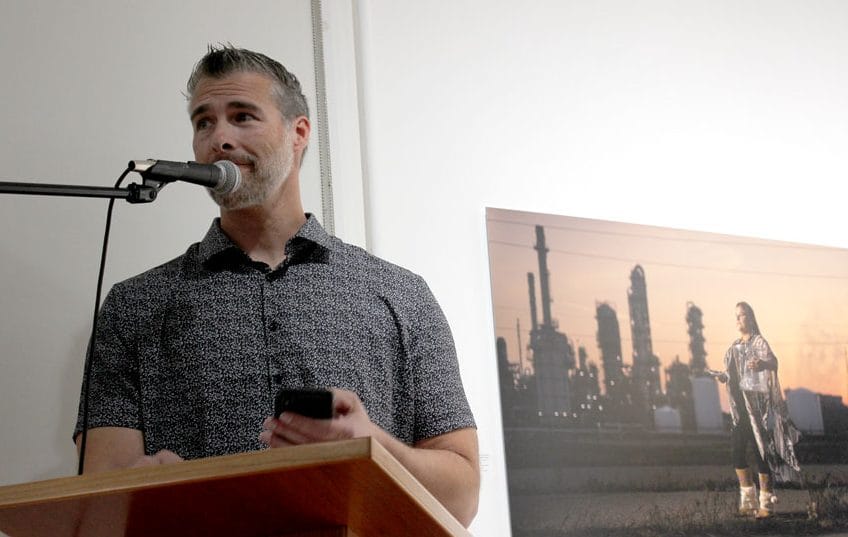ELORA – An emotional story is told through vibrant photography adorning the gallery walls at the Elora Centre for the Arts (ECFTA).
It’s a story of community, culture, and connection.
The photographer is Wayne Simpson, an Ojibwe artist who has lived in Elora with his wife and daughters for about seven years.
Simpson’s exhibit is called Miziwezi, pronounced miz-e-way-zee. It means “He is Whole” in Ojibwe.
The exhibit includes photography and a short film, showcasing the year Simpson spent reconnecting with his Indigenous roots.
“For the longest time I can remember I felt incomplete,” Simpson said, walking with “one foot in the white world and one foot in the Indigenous world.”
As a young boy Simpson lived on a reserve near Sarnia with his mom and two brothers, where “things were rough for a white-looking child,” he said in an Advertiser interview.
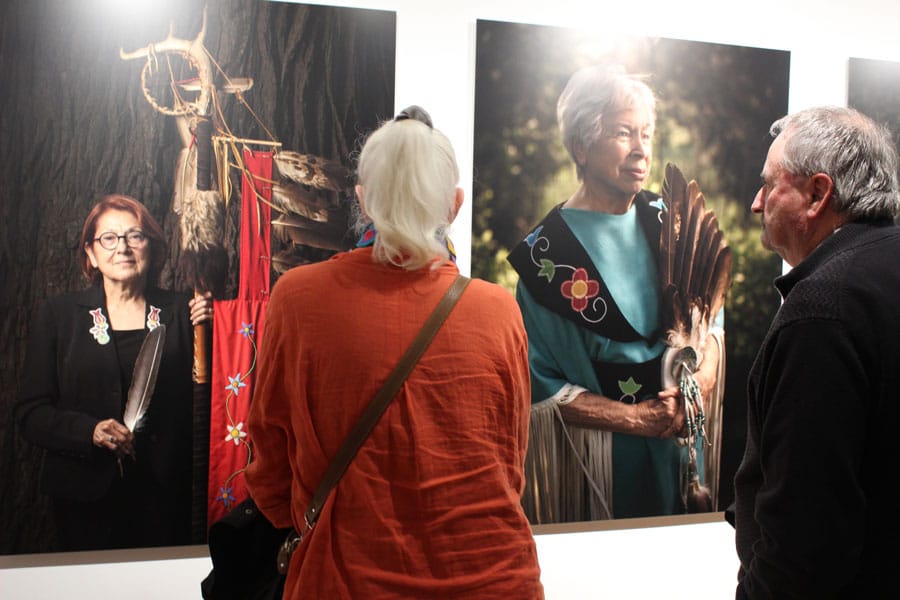
Attendees admire photographs by Wayne Simpson during his ‘Miziwezi’ exhibit’s opening reception. The photo on the left is Simpson’s aunt, Joanne Rogers, who was Aamjiwnaang First Nation’s first female chief from 2016 to 2018.
When he was seven, his mother sent him away from the Aamjiwnaang First Nation reserve to live with his father – whom he’d never met before.
His mom felt that sending Simpson away was the only gift she could give him.
After that, he saw his mom every other weekend, at most, and grew up without knowing much about his Indigenous culture.
A grant from the Canada Council for the Arts empowered Simpson to reconnect with the family he left behind.
At first, Simpson said he tensed up whenever he entered the reserve.
“I didn’t feel like I belonged for the longest time.”
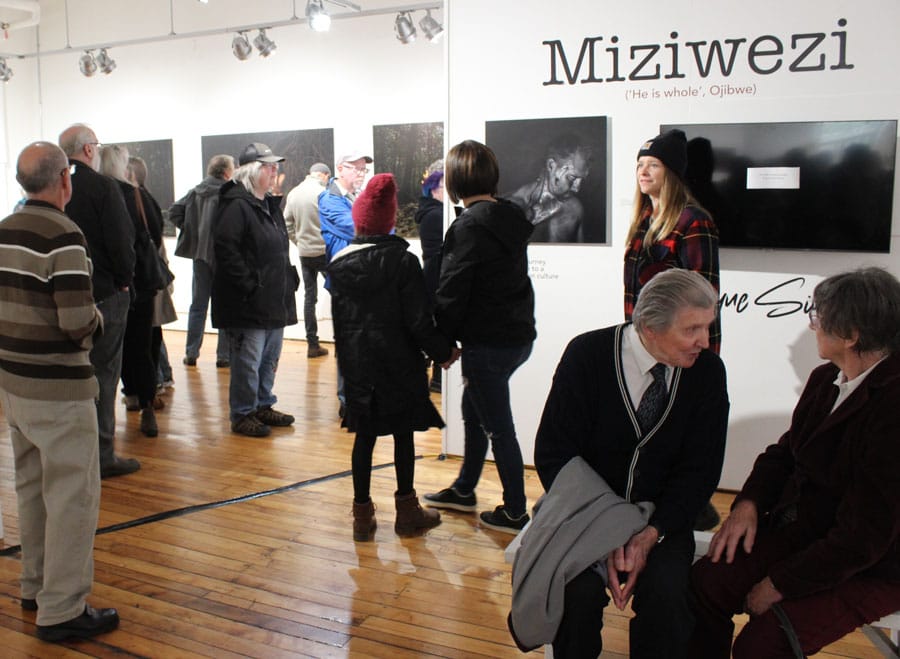
About 150 people showed up to the ‘Miziwezi’ opening reception at the Elora Centre for the Arts on Oct. 15.
But once Simpson dedicated time to getting to know the people in Aamjiwnaang, “that all changed,” and he learned how welcome he is.
That’s the biggest take-away Simpson has from his year-long journey of self-discovery in Aamjiwnaang – that the people there welcome him.
“The beauty in Aamjiwnaang is not the place, its the people,” Simpson said in his short film.
“I was able to break through the walls I built up as a kid by getting to know people.”
A transformative moment for Simpson was when he was invited to participate in a sweat lodge ceremony.
He said he was taught each step of the process with patience and grace, including harvesting saplings to build the lodge.
“That one day changed everything for me,” and by the end of it, “my insecurities and lack of feeling like I belonged melted away.”
“Now, they call me a brother,” he added, his voice thick with emotion.
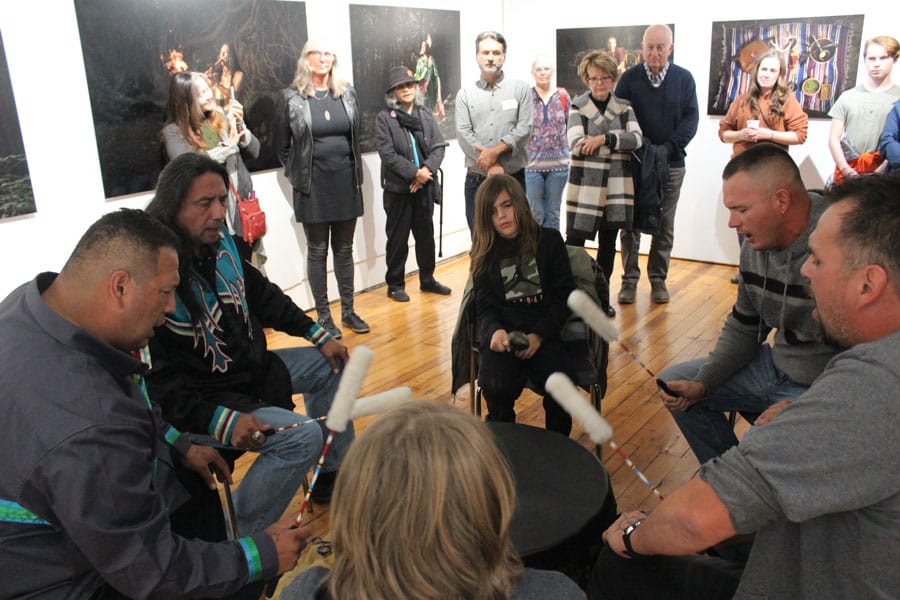
A group of men and boys from Aamjiwnaang First Nation sang and played a drum during the Miziwezi opening reception at the Elora Centre for the Arts on Oct. 16.
After that, Simpson said he was “finally able to learn what a rich and beautiful culture I come from.”
Simpson said he is grateful to the community in Centre Wellington for their support and interest in his work, and to the ECFTA for offering “such a comfortable space” and being there “every step of the way.”
About 150 people showed up for the Miziwezi opening reception on Oct. 15, including many who travelled from Aamjiwnaang First Nation.
Historian, author, and Thunderbird Sundance Elder Nibianaquot, or David Plain, opened the reception with a brief history of the land.
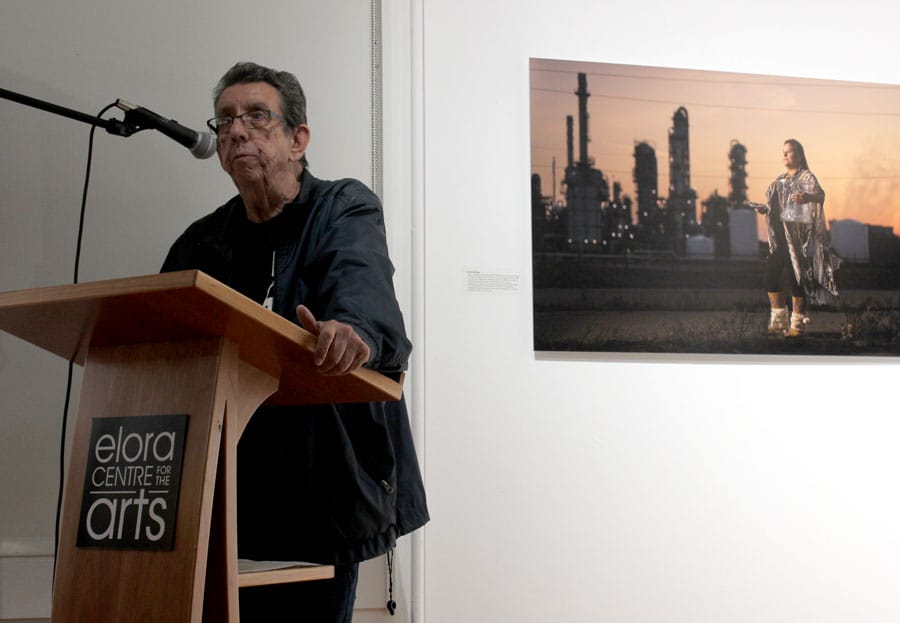
Historian, author, and Thunderbird Sundance Elder Nibianaquot, or David Plain, is featured in one of Simpson’s photos and opened the Miziwezi reception.
Nibianaquot is featured in one of Simpson’s photographs, sitting in a teaching lodge with a fire glowing behind him.
His name means Water Cloud, and was given to him by an Elder.
During an interview with the Advertiser at ECFTA, Nibianaquot said he was “really impressed” with Simpson’s exhibit.
“He’s a very talented photographer,” he said – “the depth that he gets, you can see the pores on people’s skin!”
Nibianaquot found Simpson’s film “really poignant,” and said it brought a tear to his eye.
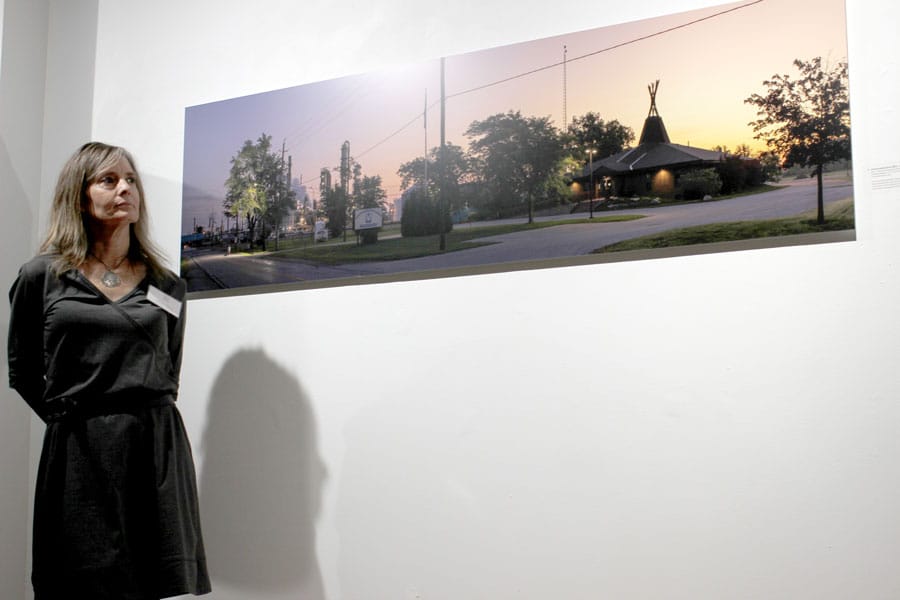
Miziwezi – Elora Centre for the Arts director Lianne Carter, standing beside a photo by Wayne Simpson of the Aamjiwnaang band office, during the reception for Simpson’s ‘Miziwezi’ exhibit on Oct. 15.
ECFTA executive director Lianne Carter introduced Simpson to attendees at the reception, and described Simpson’s journey as “vulnerable and raw,” showing his “strength, depth of character, growth and perseverance.”
The exhibit showcases Simpson’s “open and honest learning,” Carter said, her eyes welling with tears.
Simpson’s journey was wrought with emotion from the get-go, as news of the successful grant came at a pivotal moment in his life.
His mother was in a hospice, sick with COPD.
Before the grant was approved, his mom passed away.
Moments after her passing, Simpson stepped out of her room at the hospice and received a call from ECFTA director of development Molly Kleiker, saying “‘you got the grant.’”
Simpson shared this story during the opening reception, and laughed at himself for doing so, because of course it brought him to tears in front of the crowd.
He laughed at himself for the scale of the project, too – “An entire exhibit, and by the way, I’ll throw a film in there too.”
During regular exhibit open hours the film plays on a screen mounted on the wall, but during the reception it was featured on a large projector for attendees to watch together.
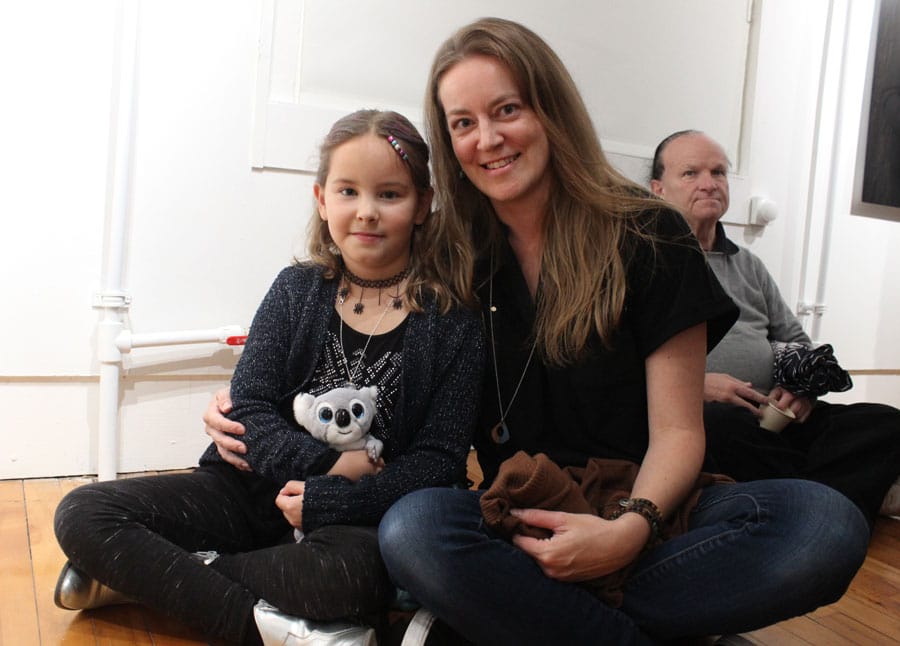
Wayne Simpson’s daughter Willow, left and wife Candice Simpson, sitting to watch his short film during the ‘Miziwezi’ reception.
Many cried quietly during the film, including Simpson’s wife, Candice.
“I can’t help but feel that my mom would be proud of me now,” Simpson said in the film.
Working on this project showed Simpson that he can walk in two worlds – the Indigenous world and the white world, and it doesn’t mean he’s incomplete – “in fact, its what makes me whole.”
Miziwezi will be open in the gallery at the ECFTA until Dec. 23.




